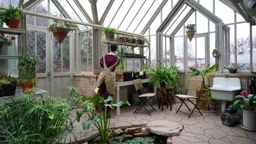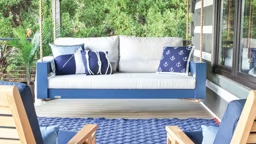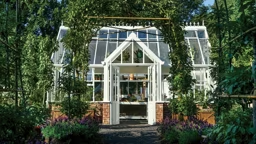
By Rin-rin Yu
Why should you think about installing a pond at your log home? Well, if you ask Steve Shinholser why someone should have a water feature on their property, the owner of Premier Ponds in Burtonsville, Maryland’s, answer is simple: “Because it makes you happy.”
It’s no secret that the sounds of trickling water, the ripples across a pond’s surface and the swishing fish are just a few of the reasons people flock to vacations by the water’s edge. It’s why many log home buyers seek to own land with river, pond or lake frontage. If your idyllic setting doesn’t have a natural body of water on the premises, fear not! You can still enjoy a little liquid bliss by rounding out the natural appeal of your acreage with a manmade water feature.
Not only is having a water feature peaceful, it can be a low-maintenance way to raise your property value — if it’s done correctly, cautions Bradden Kerr, senior fishery biologist and habitat designer for Spring Creek Aquatic Concepts in Tualatin, Oregon. It enhances the landscape and, in some states, can reduce fire insurance costs. A professional water-feature specialist will know the best way to create your backyard oasis.
“If it’s built right, it can be a lot less maintenance than if you had a patch of grass the same size,” Steve says.
Water supply and budget will determine size of the pond. For example, if you have a well, it will cost less to fill it than if you tap into public water system. Depth and temperature are important only if you’re planning to stock it with fish. Seepage is another consideration.
Smaller ponds may be sealed with rubber or plastic lining, and will have a life expectancy of about 10 to 20 years. However, investing a little more money up front for a bed with a clay base can create a pond that lasts for centuries, Bradden says. A well-designed pond will develop into a thriving ecosystem that cleans itself without a recirculation system, though some smaller ponds may require annual upkeep. If you’re building a fishing pond, patience is key.
“It takes time for the ecosystem to mature and prepare to support fish life,” Bradden says.
After letting the pond sit for about a year, begin by stocking it with small fry, then add larger fish. And patience should come easily once you have your water feature in place.
“It’s serene, it helps you relax — it’s Mother Nature at her best,” Steve says. “You’re bringing peace right into your own backyard.”
How Much Does It Cost to Build a Pond?
This question can be as difficult to answer as “how much does a car cost?” It depends on make, model, options, features, etc. But thanks to the good folks at Wisconsin Lake & Pond Resource in Eldorado, we have a point of reference. They estimate that a typical lined pond will range from $1.50 to $2.50 per square foot. So for a half-acre body of water, this equates to about $33,000 to $55,000.
What do you get for the money? Here’s what a standard pond installation includes:
- Permitting
- Design
- Construction
- Equipment
- Materials
- Water source
- Landscaping
Factors that determine costs:
- Size
- Depth
- Shape
- Watershed and site soil conditions
- Topography of the land
- Amount and distance required for spoils removal
- Lining requirements
- Equipment required
Costs can vary depending on your region and local labor rates. Consult with a professional to get an accurate estimate for your area.











